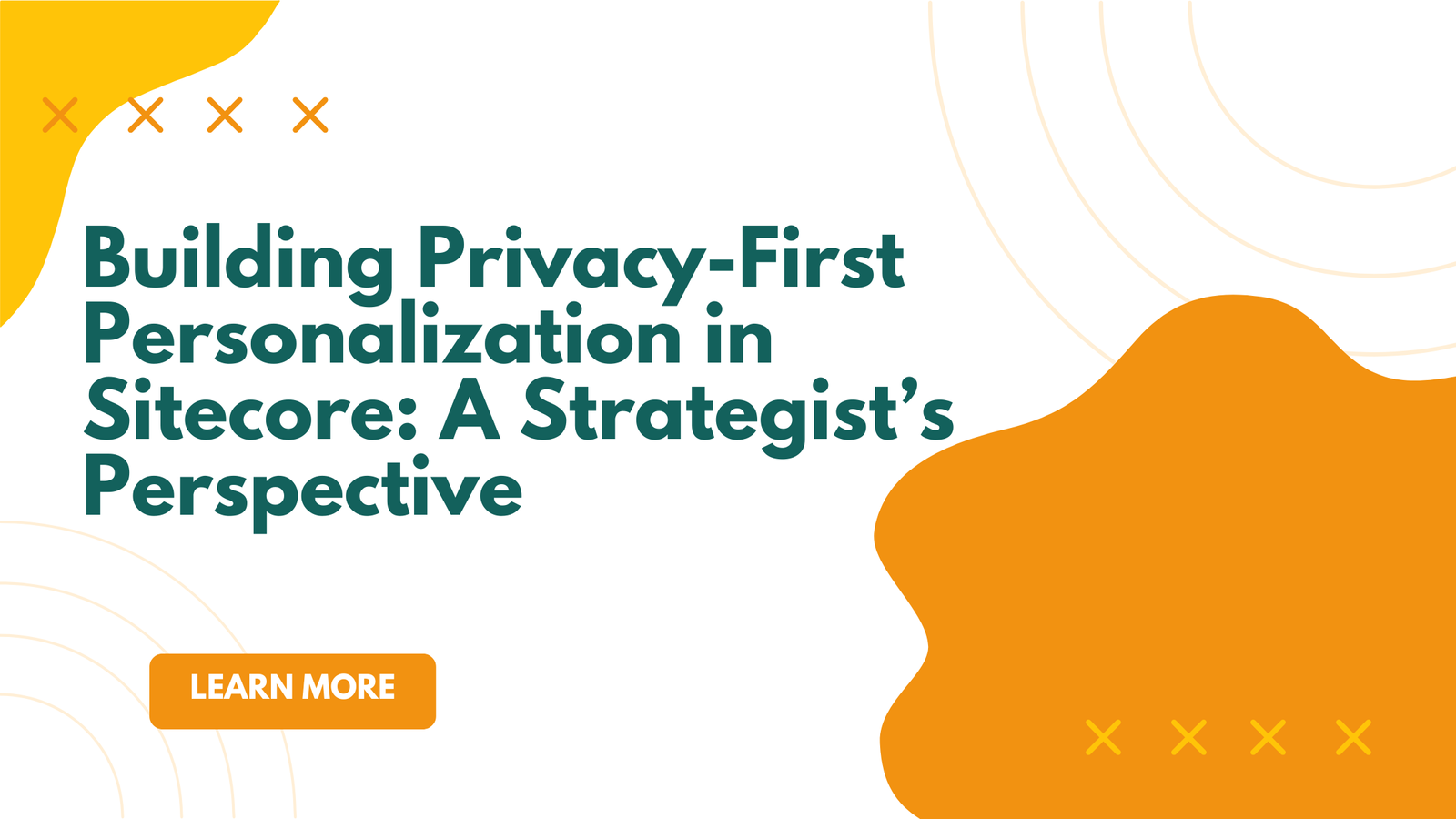Sitecore provides the building blocks. As strategists, we must assemble them thoughtfully.
Start with Consent: The Foundation of Trust
- Use Consent Management Platforms (CMPs) integrated with Sitecore to ensure users opt-in before tracking begins.
- Personalization rules can be triggered based on consent status—only personalizing for users who’ve opted in.
- Strategic Tip: Build audience segments based on consent tiers: full consent, partial consent, and anonymous. Align your experience strategy accordingly.
Shift from Identity to Intent
- Not all personalization needs to rely on PII (Personally Identifiable Information).
- Use behavioral data like on-site clicks, pageviews, and session history to personalize anonymously.
- Example: Serve content based on category interest rather than logged-in identity—such as showing eco-friendly products to users browsing sustainability content.
Create Transparent User Journeys
- Clearly communicate what data is being collected and how it’s used. Update privacy policies to reflect this in plain language.
- Offer a “Why am I seeing this?” feature on personalized content modules.
- Strategic Tip: Partner with UX teams to ensure privacy messaging feels like a brand value—not a legal disclaimer.
Use Sitecore CDP and Personalize Responsibly
- Sitecore CDP allows rich profiling and decisioning—but strategists must define ethical use cases.
- Resist the urge to over-segment or hyper-target. The more specific the message, the more it risks crossing a line.
- Guideline: If the user would be surprised you know something about them, reconsider the tactic.
Give Users Control
- Empower users to manage preferences—what they want to see, how often, and through which channels.
- Sitecore Forms and Preference Centers can be used to create such controls.
- Strategic Tip: Position this as a personalization benefit (“Tell us what you love, and we’ll tailor your experience”), not just a legal checkbox.
Building a Privacy-First Personalization Roadmap
Here’s how to roll this out in a real-world strategy:
Phase 1: Audit & Align
- Audit current personalization rules: are they reliant on PII? Are they consented?
- Collaborate with Legal/Compliance to map regulation requirements across regions.
- Define KPIs that measure value delivery, not just engagement (e.g., trust score, opt-in rates).
Phase 2: Redesign with Consent in Mind
- Rebuild personalization logic with opt-in flows and fallback experiences.
- Create audience tiers based on privacy level (Anonymous, Behavioral, Known).
- Introduce privacy messaging into content strategy and microcopy.
Phase 3: Monitor & Optimize
- Set up dashboards to track consented personalization performance.
- Collect qualitative feedback through surveys or usability testing.
- Iterate: regularly review what content feels intrusive vs. valuable.
The Human Element: Trust is a Long Game
As strategists, our goal isn’t just conversions—it’s relationships. Privacy-first personalization in Sitecore is about earning attention, not grabbing it. It’s about giving users the power to choose the kind of experience they want, and trusting them to reward us for that respect.
In the end, personalization isn’t about knowing everything. It’s about knowing what matters—and knowing when not to know.
If you’re navigating this balance in your own organization, start with a mindset shift: personalization is not just a marketing feature—it’s a trust-based interaction. And in Sitecore, the tools are there. The strategy is up to us.
